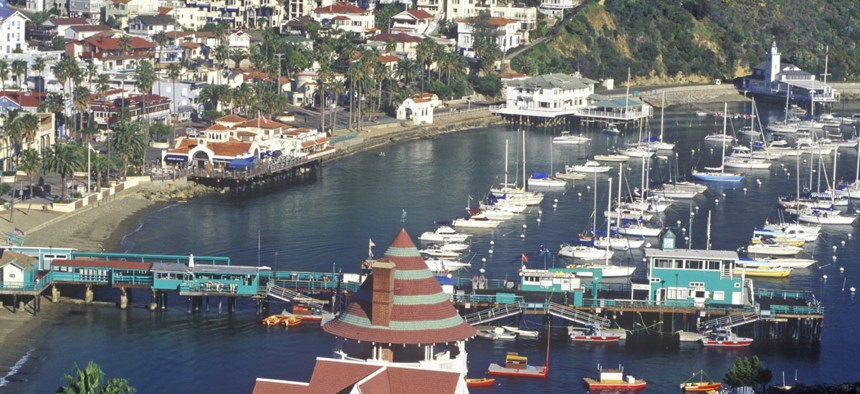Going Where No Street View Has Gone Before

Santa Catalina Island, located southwest of Los Angeles, was a void on maps until a few enthusiasts armed with 360 cameras set about imaging its streets and noting mislabeled addresses.
Santa Catalina Island and its lone city, Avalon, were incredibly hard to navigate as late as September because local street-level imagery was nonexistent.
Google Street View lacks a financial interest in mapping out-of-the-way places like Catalina, so the Pacific island southwest of Los Angeles, but still part of L.A. County, was a virtual void.
This can present challenges for first responders like firefighters, who require accurate addresses and routing in their line of work.
That's where MaptimeLA steps in.
“There are hundreds of thousands of dark areas of Los Angeles County that need good mapping, and they need good mapping from people who live in that area,” said Jon Schleuss, a Los Angeles Times data visualization reporter by day and MaptimeLA organizer in his spare time.
The L.A. Times uses the free, open source project OpenStreetMap for things like crime mapping, where most people rely on mobile apps like Google Maps, Apple Maps and Waze. If you’ve ever seen a Craigslist map, you’ve witnessed OSM data in action, but L.A. government agencies are the other prominent users in the county.
OSM base maps come in handy importing the shapes of the approximately 3 million buildings in the county, so there’s a collective interest in improving local data and, thereby, local maps.
Schleuss, an Arkansas native with an occasional craving for “small town vibes,” recently proposed MaptimeLA, which meets every other Thursday, camp out in Catalina the weekend of Oct. 1 to map it.

MaptimeLA wasn’t alone in its endeavor, teaming with Sweden-based startup Mapillary to capture images with cheap 360 degree cameras the platform stitches together into a street view via advanced computer vision algorithms. What Google Street View does by car, Mapillary does through crowdsourcing to canvas hard-to-reach places.
“Everybody had a good phone in their pocket with a decent camera and GPS, so we could place the photo on the map,” said Johan Gyllenspetz, Mapillary cofounder. “The virtual reality community is pushing better, cheaper 360 cameras, and consumer-grade cameras are getting better as well.”
Upon arrival, L.A. County Fire Captain Gary Black let MaptimeLA use his operations room, complete with a gigantic, offroad fire truck, to work.
There are about 1,100 addresses on Catalina Island, and residents chose house numbers themselves.
In many cases, map points were based on assessor records and focused on the middle of properties rather than the main entrances of structures. If properties weren’t square, map points might even be shifted to adjacent parcels, Schleuss said.
House numbers were derived from the imagery taken and documented so map points could be moved, when necessary, to the proper home or building.
Not only does the fire department have the correct addresses now, but their routing software will be able to find ideal streets easier because map points won’t lead them to the center of large parcels. Tactically, 360 street views will enable Black’s crew to scout the scenes of fires in advance on mobile devices to plan maneuvers.
Back on the mainland in East Hollywood, Schleuss lives near a Braille institute around which the city is constantly rebuilding sidewalks. Blind and other visually-impaired residents can’t necessarily tell when a sidewalk is closed until they’re on top of a plastic barrier, confused.
Updating under construction sidewalk data in an open source app for those residents would be immensely helpful, he said.
“As a community, we benefit from everyone getting involved in that project,” Schleuss added.
As for Mapillary, Gyllenspetz envisions cities using the platform to document street trees, lights and traffic signs—noting changes in things like speed limits.
“If we do this on a regular basis, we can even help the city understand what was there before and what isn’t there anymore,” he said.
Dave Nyczepir is a News Editor at Government Executive’s Route Fifty and is based in Washington D.C.
NEXT STORY: Small satellites could improve hurricane forecasting






